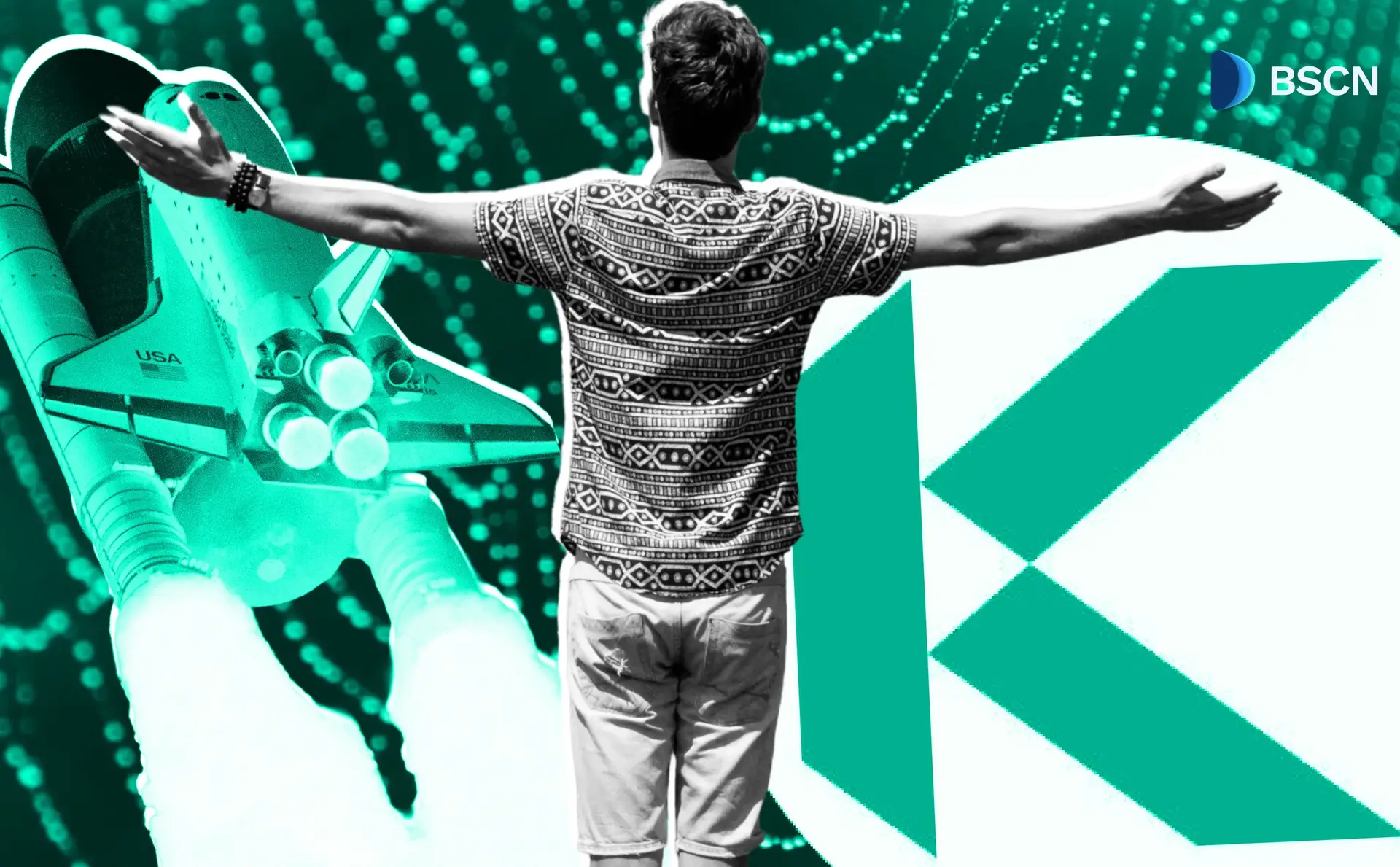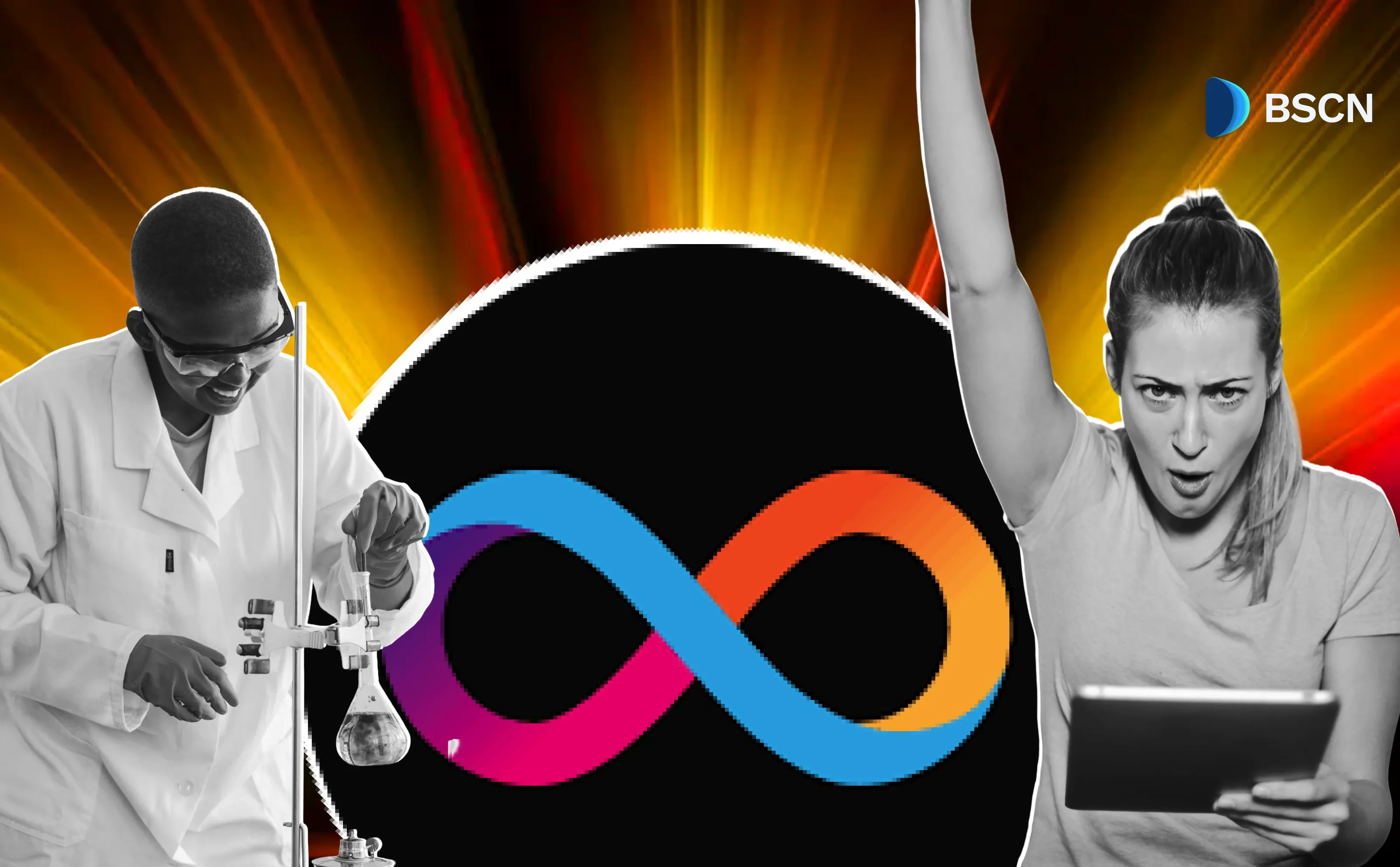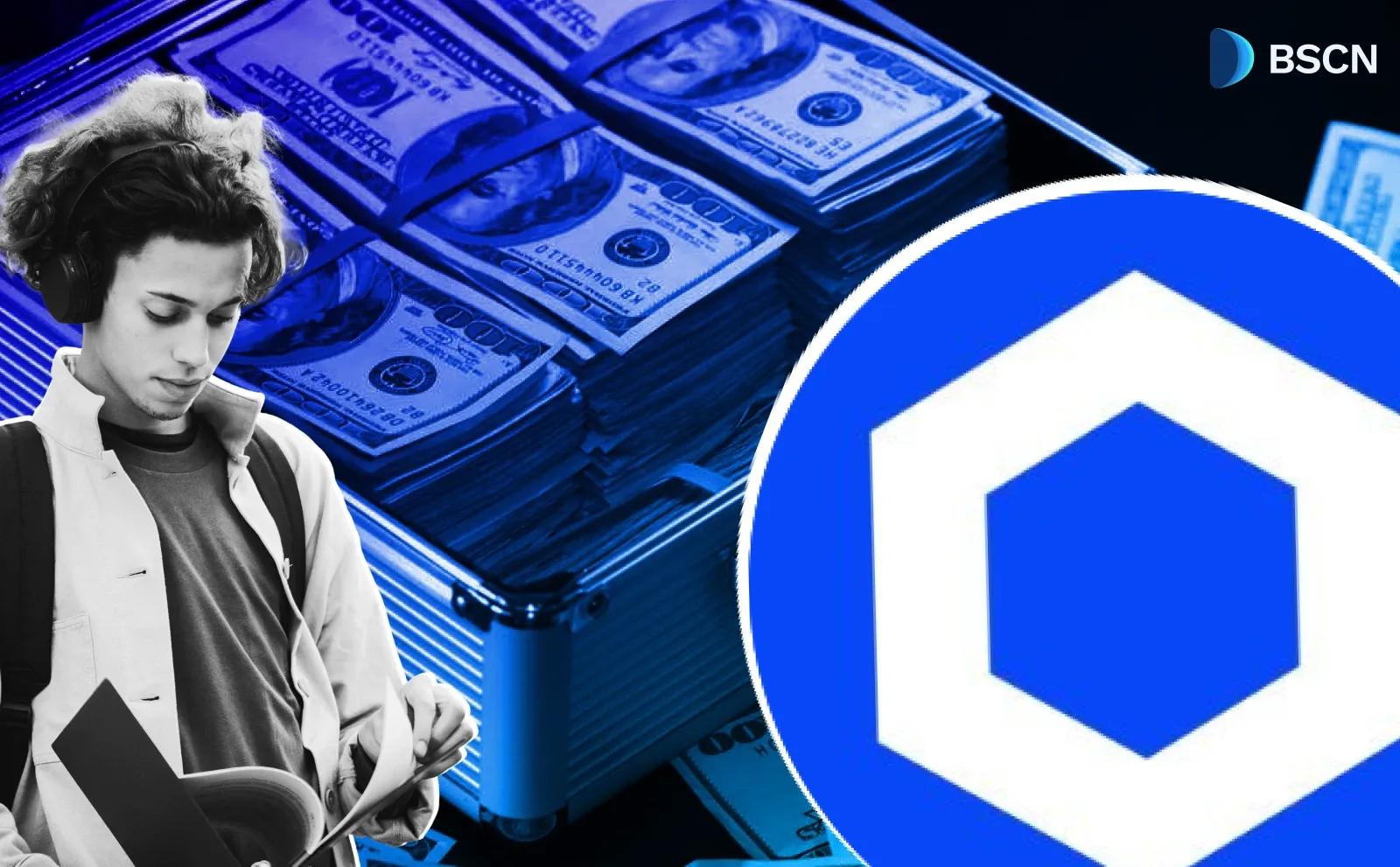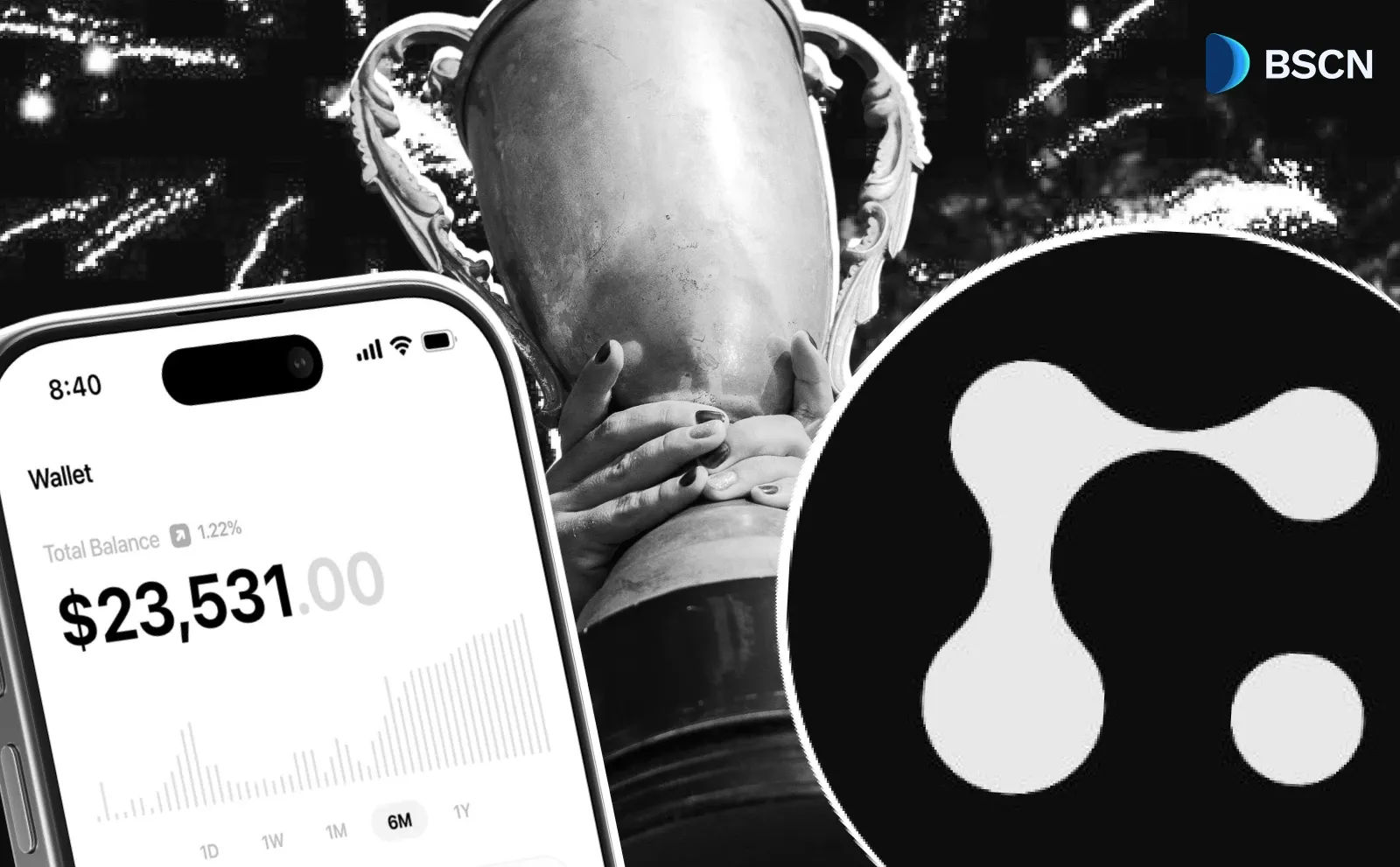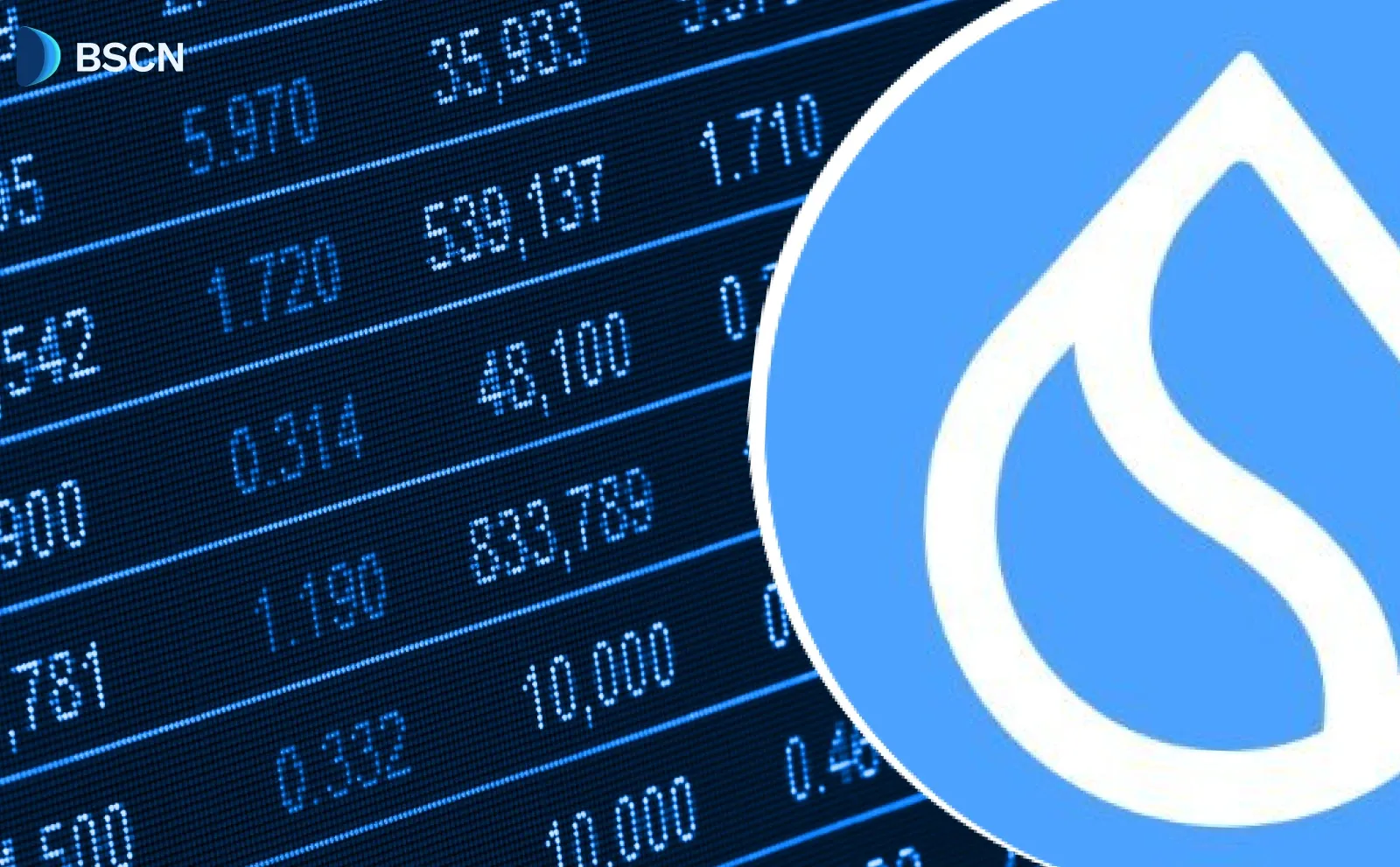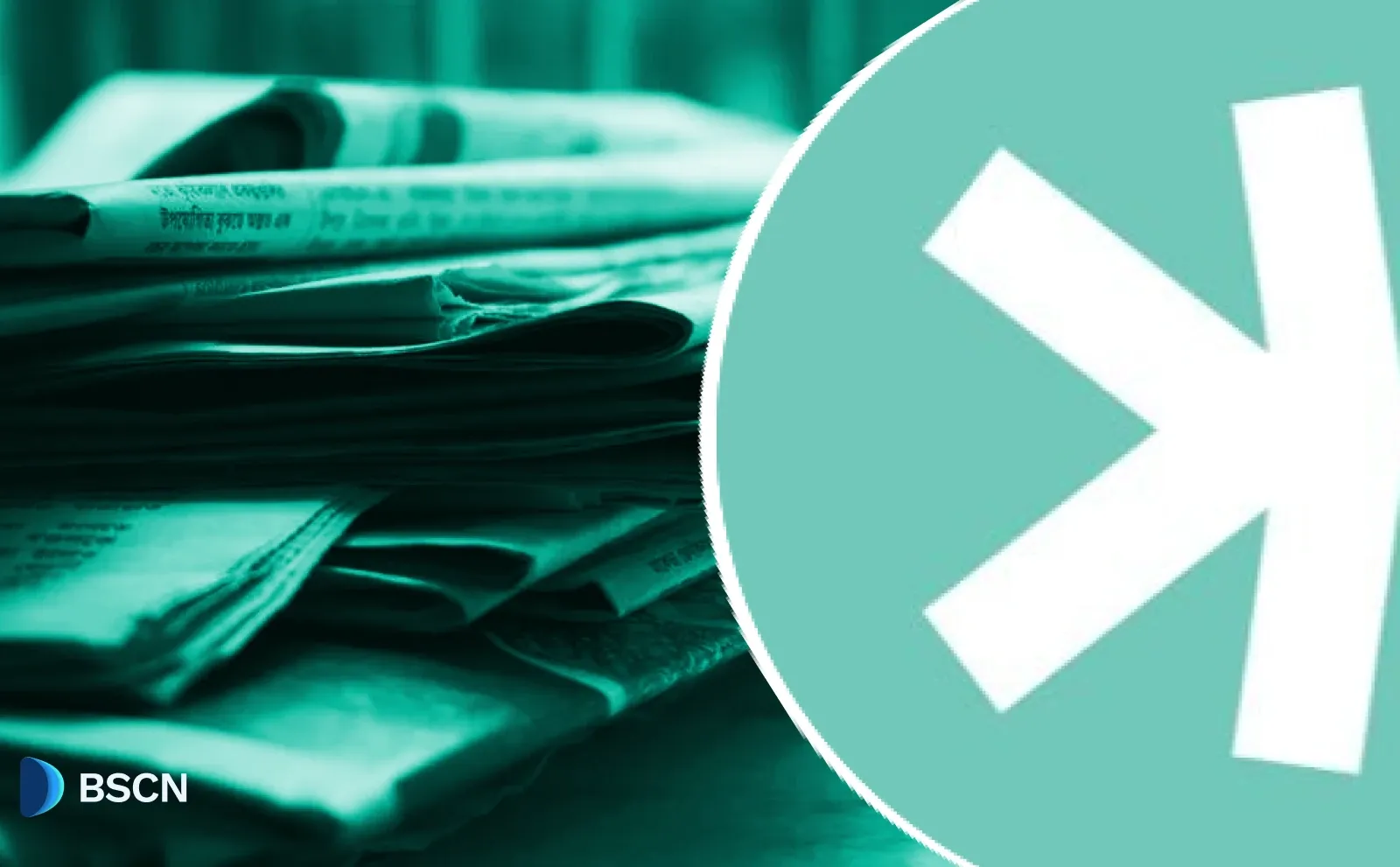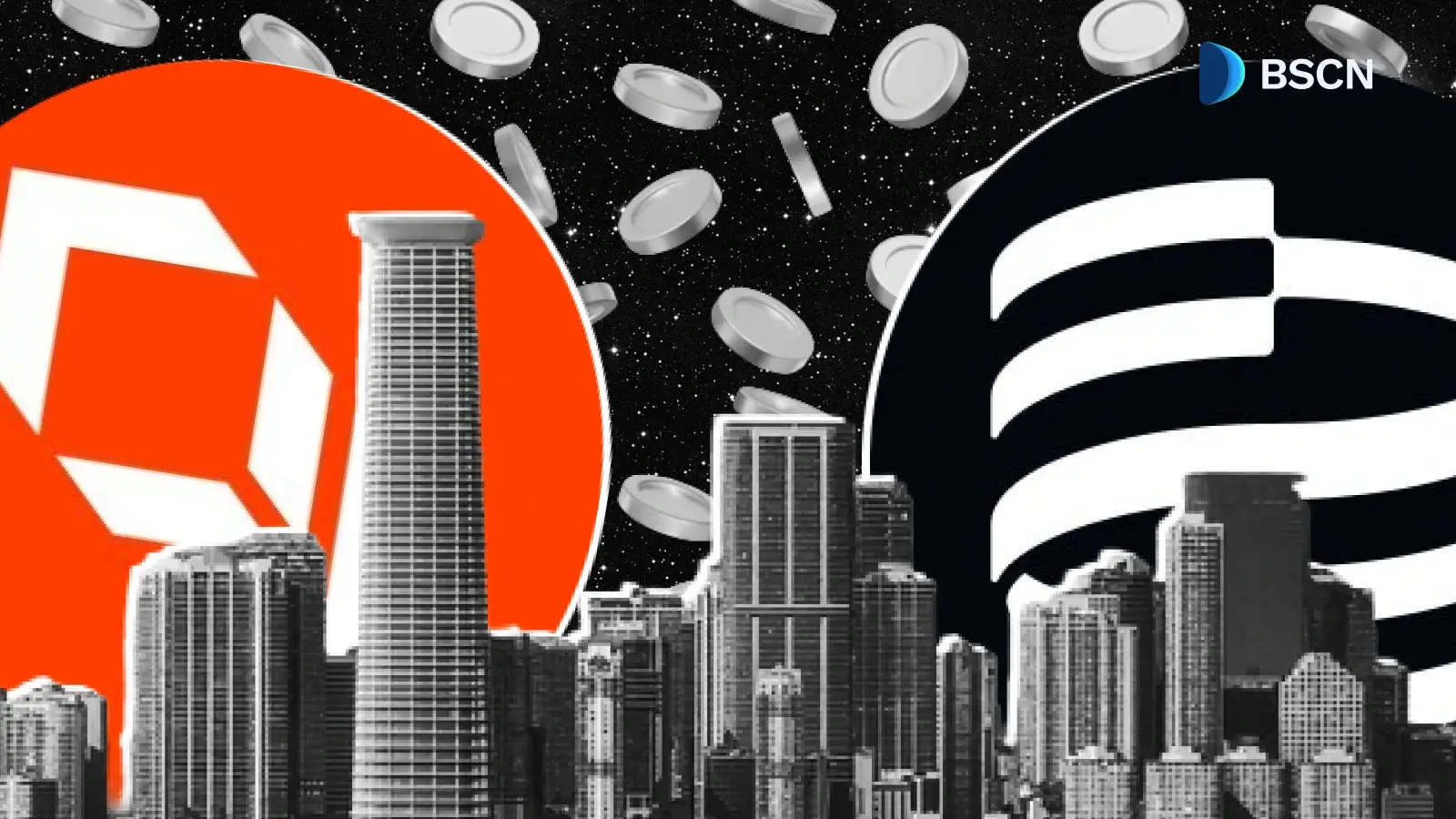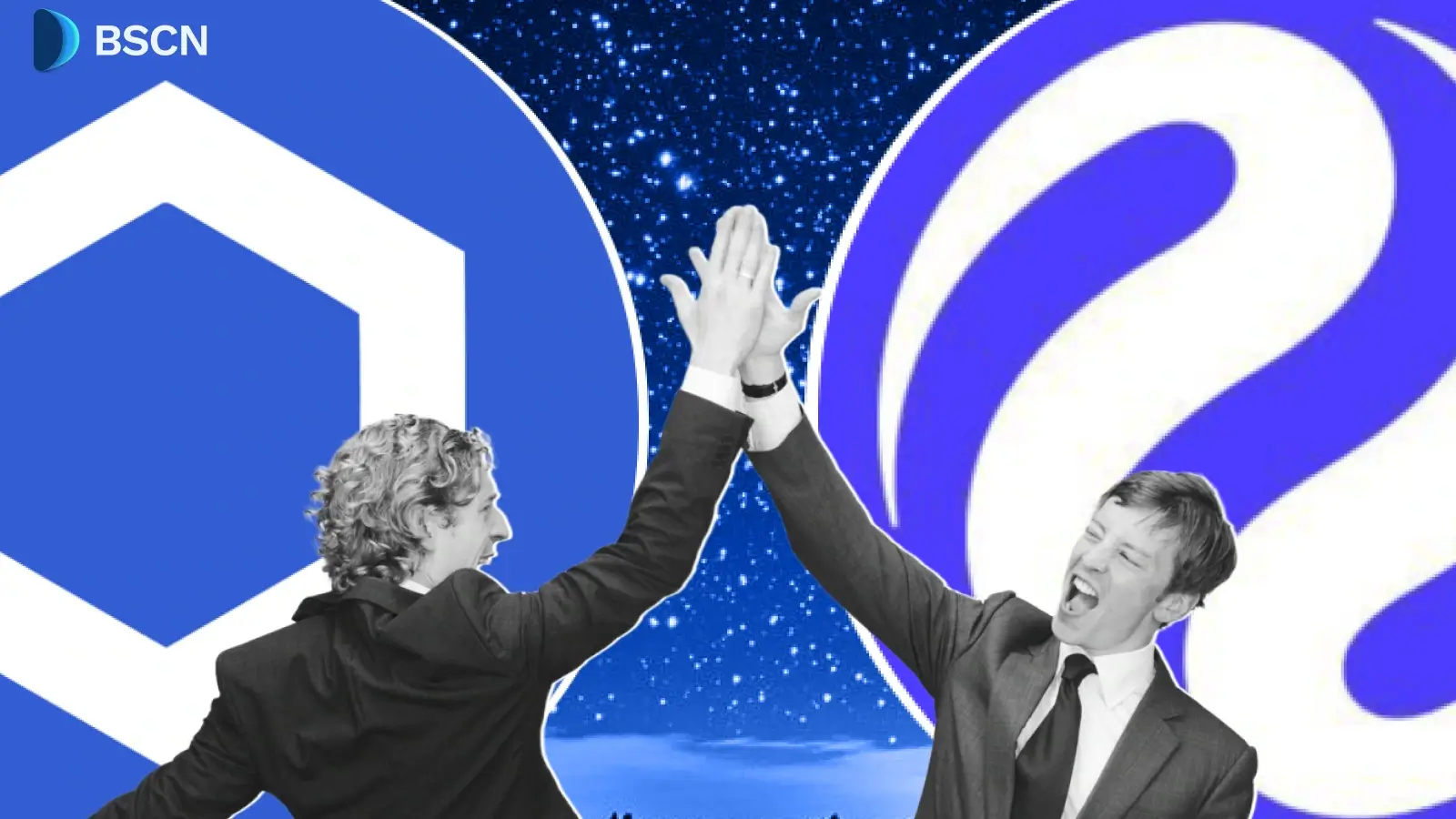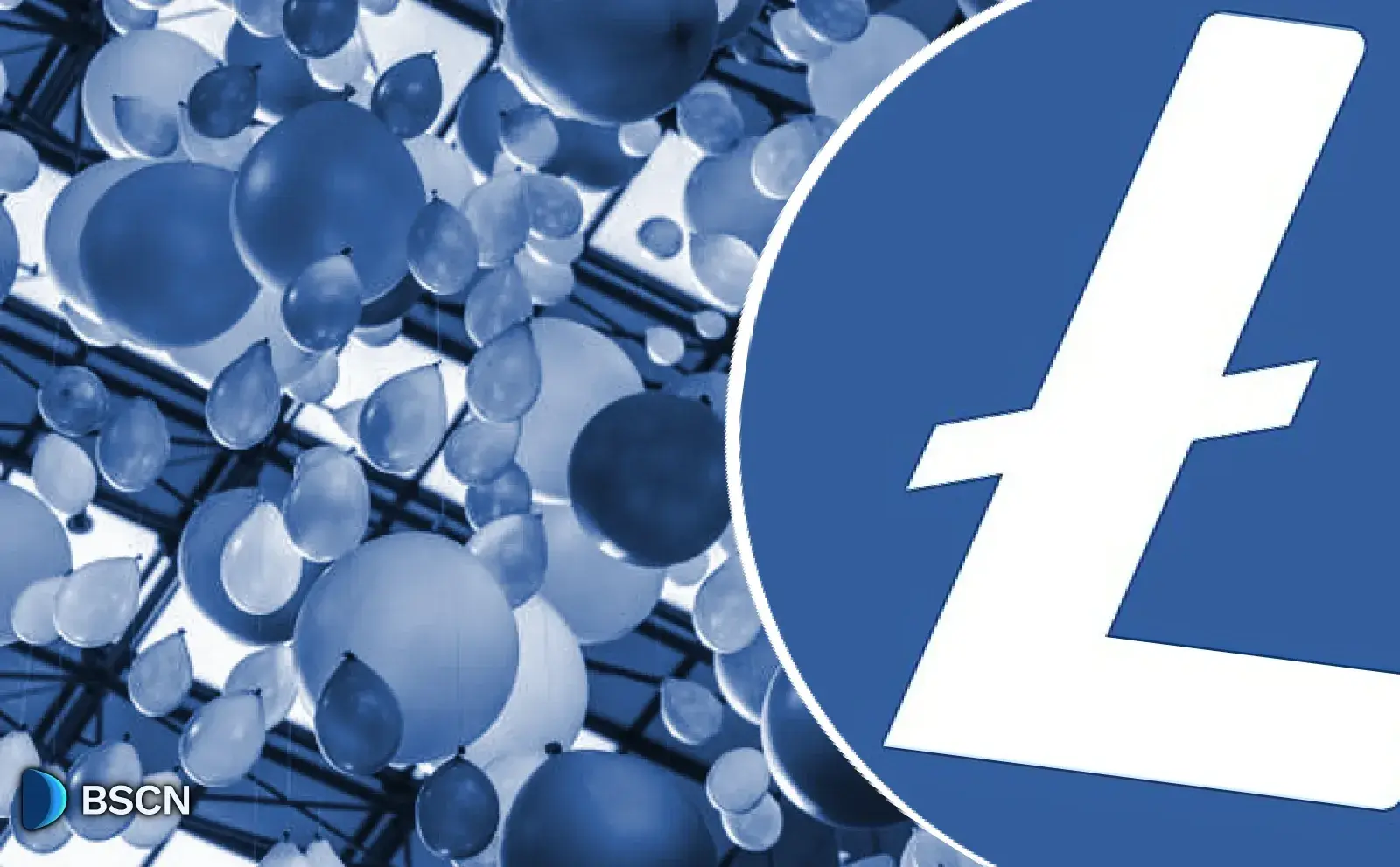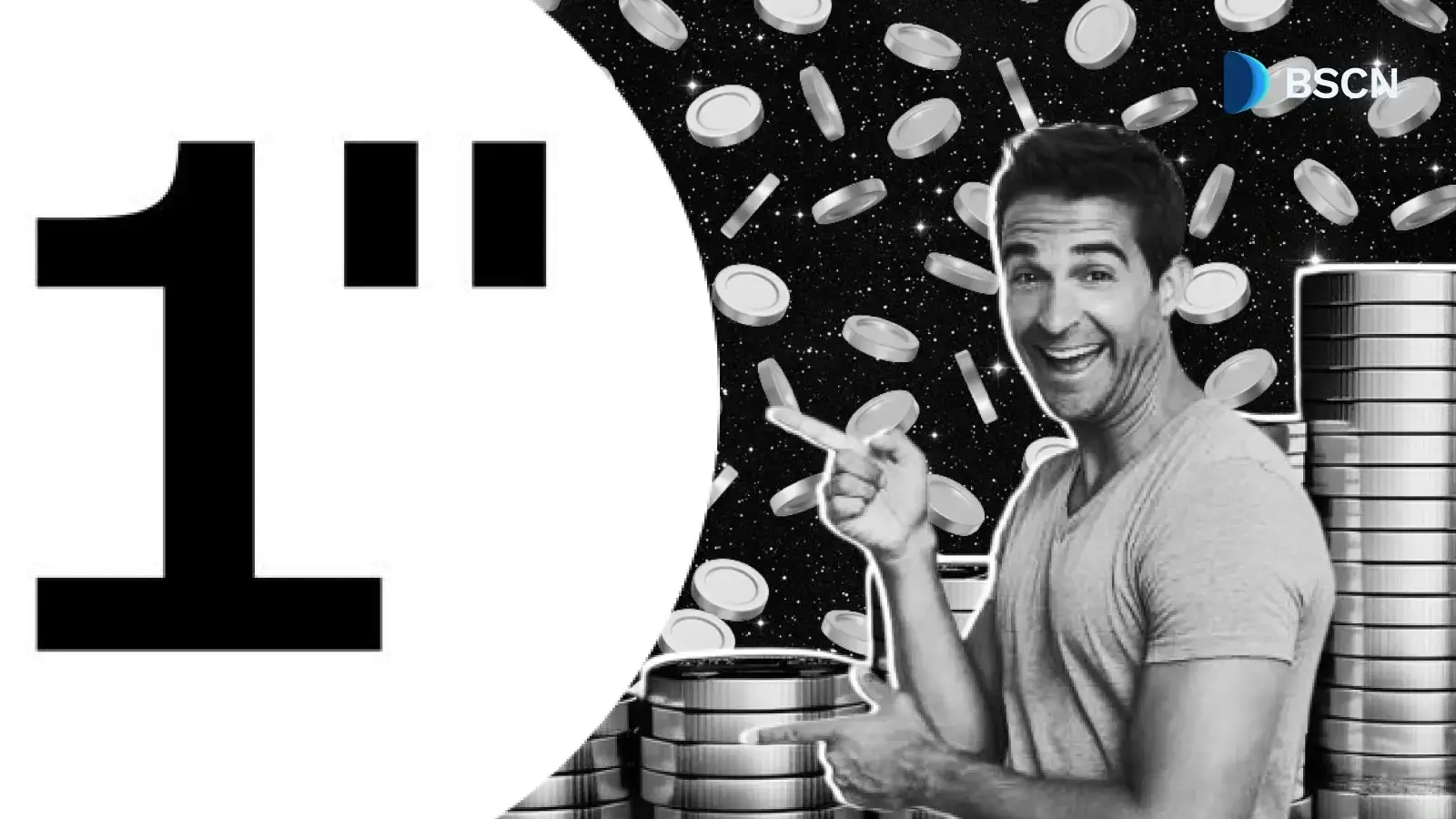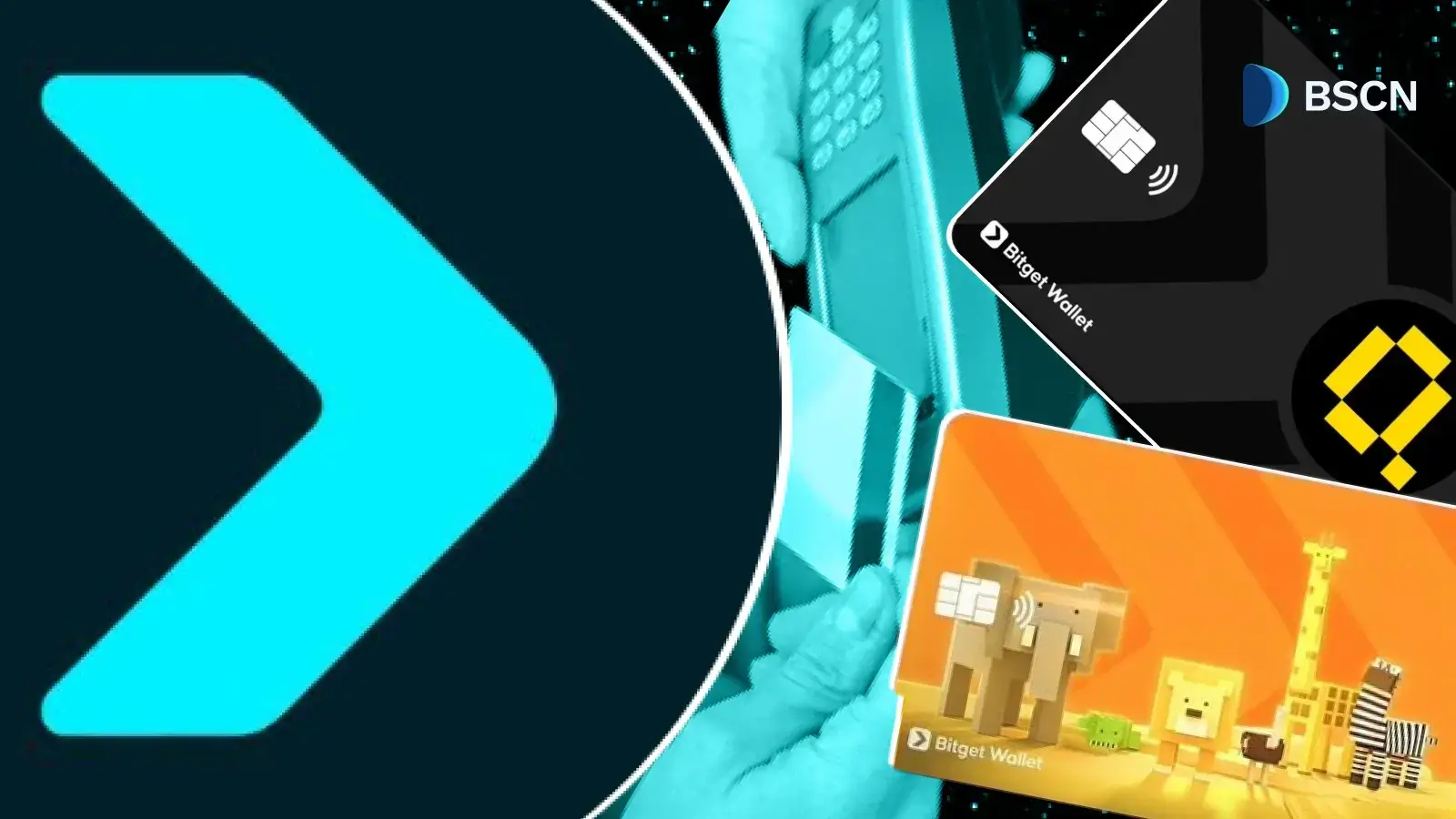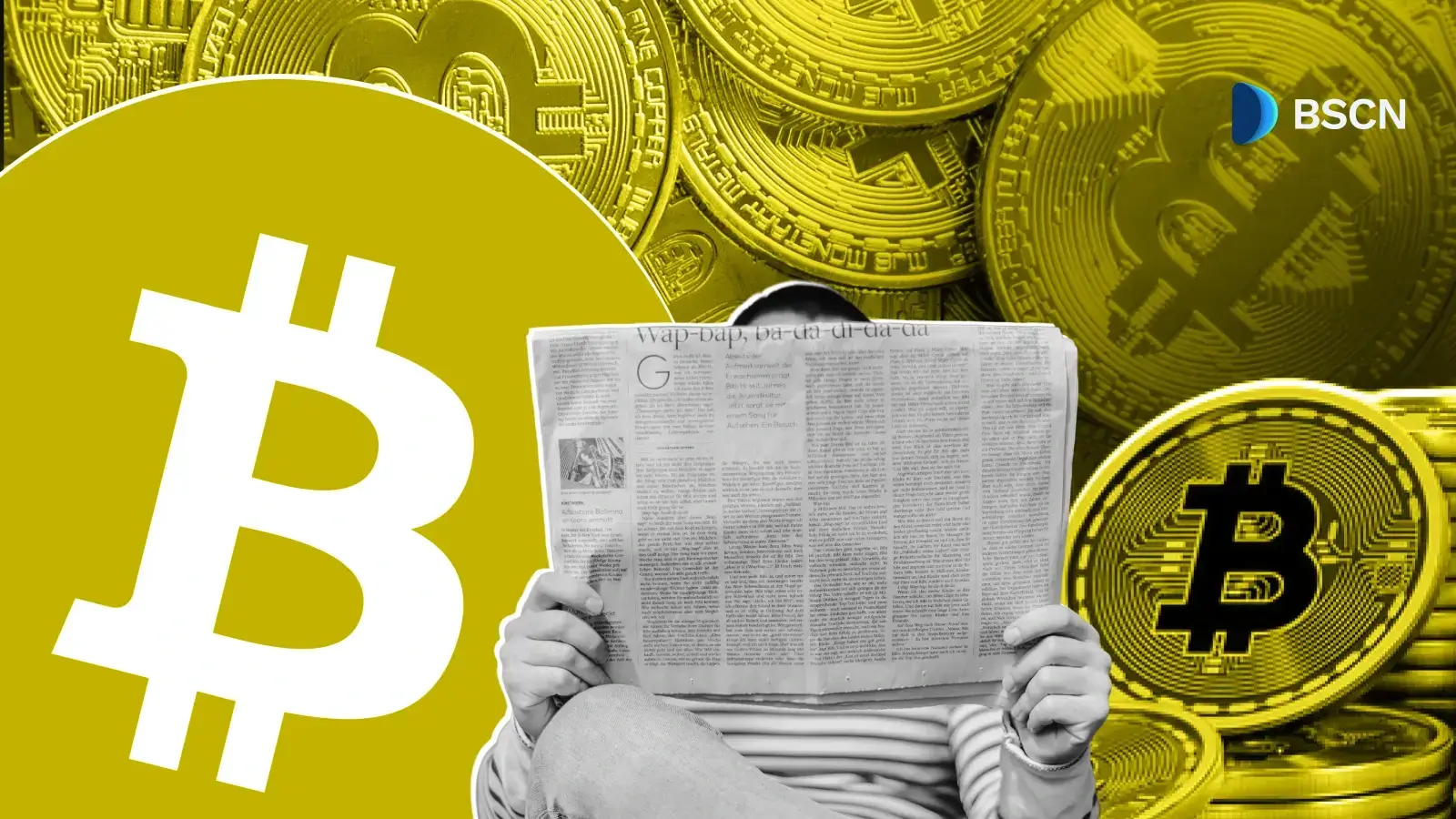Research
(Advertisement)
What is the XPL Token: Exploring Plasma Network’s Utility asset

The XPL token serves many purposes in the Plasma ecosystem.
UC Hope
October 8, 2025
(Advertisement)
Table of Contents
The Plasma blockchain, a Layer 1 network focused on stablecoin transactions, features the $XPL token as its native asset, which supports network security and transaction facilitation. Launched in September 2025, Plasma aims to facilitate high-volume stablecoin transfers with features such as zero fees for certain operations and compatibility with Ethereum Virtual Machine standards.
The XPL token, with an initial supply of 10 billion, plays a central role in the system's proof-of-stake consensus and incentive structures, drawing comparisons to tokens like Bitcoin on its network or Ether on Ethereum. This article examines the token's distribution, economic mechanisms, market performance, and recent developments based on available data as of October 8, 2025.
What Is the Plasma Blockchain?
Plasma is a proof-of-stake blockchain optimized for stablecoins such as USDT. It supports transaction speeds exceeding 1,000 per second, with block times under one second and low operational costs. The network features custom gas tokens, enabling users to pay fees in stablecoins or other assets, rather than solely in the native token. It also offers confidential payment options and a bridge for integrating Bitcoin into smart contracts, reducing trust requirements.
The project has received investments from entities including Founders Fund, Framework Ventures, Bitfinex, DRW, Flow Traders, and Nomura, totaling about $24 million. These funds have supported the development of infrastructure aimed at stablecoin adoption. Notable figures associated with the project include Paolo Ardoino, CEO of Tether; Scott Bessent, a nominee for U.S. Treasury Secretary; Chris Giancarlo, former chairman of the Commodity Futures Trading Commission; and David Sacks.
Plasma's design prioritizes seamless integration with existing financial systems, including those of traditional institutions. It enables gasless transfers for stablecoins, allowing users to send assets without incurring network fees in certain scenarios. The blockchain is EVM-compatible, allowing developers to deploy applications similar to those on Ethereum. This compatibility extends to tools and protocols familiar to Ethereum users, facilitating easier migration of decentralized finance applications.
Role and Functions of the XPL Token
XPL serves multiple purposes within the Plasma ecosystem.
Role of XPL as Native Token
- Transaction Fees and Validator Rewards: As the native token, XPL is used to pay transaction fees on the Plasma network. It also rewards validators who maintain the network's consensus mechanism. Validators stake XPL to participate in block production and transaction validation, earning rewards in return for their contributions to network security and operations.
- Incentive Alignment for Growth: The token helps align incentives for overall network expansion, including provisions for liquidity and partnerships with decentralized finance (DeFi) protocols.
Proof-of-Stake Model and Staking Features
- Delegation Mechanism: In the proof-of-stake (PoS) model, XPL holders will be able to delegate their stakes to validators once this feature is implemented. This allows holders to share in rewards without needing to operate their own nodes. The delegation system is planned for future rollout.
- Current Staking Benefits: Currently, staking XPL offers yields and opportunities for governance participation. Promotional staking periods on platforms like KuCoin have offered annual percentage rates (APRs) up to 150% for limited durations.
Token Design for Ecosystem Expansion
- Mechanisms for Support: The design of XPL includes built-in mechanisms to foster ecosystem growth. For example, portions of the token supply are explicitly allocated for incentives in DeFi, integrations with exchanges, and campaigns to boost adoption.
- Supply Management Rules: XPL held in locked allocations by the team or investors is not eligible for staking rewards. This restriction helps manage supply dynamics and prevent undue inflation or reward dilution.
XPL Tokenomics and Distribution Details
The tokenomics of XPL emphasize controlled supply growth and long-term incentive alignment. At the mainnet beta launch on September 25, 2025, the initial supply of XPL stood at 10 billion. This supply is distributed across four primary categories, with specific unlock schedules in place to regulate circulation:
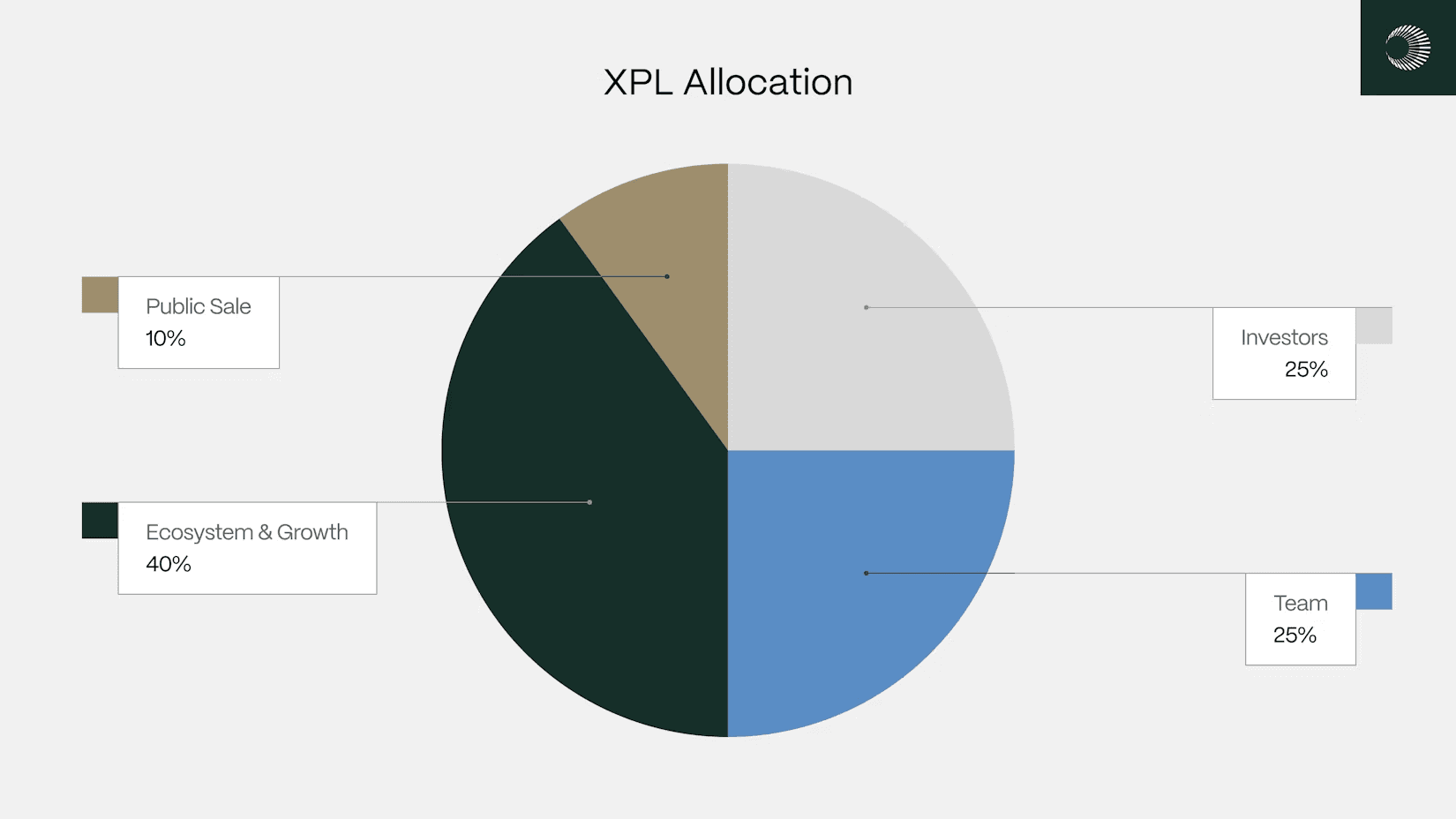
Public Sale Allocation:
- Represents 10% of the total supply, equivalent to 1 billion XPL.
- Conducted earlier in 2025 via the Sonar platform by Echo.
- Attracted $273 million in commitments, which exceeded the $50 million cap.
- Required know-your-customer verification for all participants.
- Unlock schedule: Tokens for non-U.S. purchasers were fully unlocked at launch.
- Tokens for U.S. purchasers are subject to a 12-month lockup, becoming fully available on July 28, 2026.
Ecosystem and Growth Allocation:
- Represents 40% of the total supply, equivalent to 4 billion XPL.
- Reserved for initiatives to enhance utility, liquidity, and institutional adoption.
- Immediate unlock: 8% of the total supply, or 800 million XPL, unlocked at launch.
- Applications for immediate unlock Include Decentralized finance incentives, liquidity support, exchange integrations, and early growth campaigns.
- Remaining allocation: 3.2 billion XPL unlocks monthly on a pro-rata basis over three years.
- Full availability: Reached by September 25, 2028.
Team Allocation:
- Represents 25% of the total supply, equivalent to 2.5 billion XPL.
- Intended to attract and retain personnel.
- Unlock schedule: One-third subject to a one-year cliff from the launch date.
- Remaining two-thirds: Unlocks monthly over the next two years.
- Full vesting: By September 25, 2028.
- Additional condition: Vesting tied to individual start dates.
Investor Allocation:
- Represents 25% of the total supply, equivalent to 2.5 billion XPL.
- Follows the same unlock schedule as the team allocation.
- Includes early backers from the seed round.
- Seed round featured a community-aligned approach through the first Echo sale.
Inflation Schedule and Validator Rewards
Plasma's inflation model supports validator rewards while aiming to limit dilution for holders. Annual inflation starts at 5 percent, decreasing by 0.5 percent each year until it reaches a baseline of 3 percent. This inflation activates only after external validators and stake delegation features are implemented.
Rewards are distributed to stakers through validators, with locked tokens from team and investor allocations ineligible for unlocked rewards. To offset new emissions, the network employs a fee-burning mechanism similar to Ethereum Improvement Proposal 1559, where base transaction fees are permanently removed from circulation. As network usage increases, this burning is expected to balance against inflation..
Launch Timeline and Recent Network Developments
Plasma's mainnet beta went live on September 25, 2025, coinciding with the release of the XPL token. Integrations with protocols like Aave, Fluid, Euler, Ethena, and Pendle followed shortly after. Within the first week, stablecoin deposits surpassed $7.25 billion, primarily in USDT, and the total value locked in decentralized finance reached over $5 billion, including borrowed assets. This positioned Plasma as the fifth-largest chain by total value locked and stablecoin liquidity.
On September 25, Plasma mainnet beta went live alongside the XPL token.
— Plasma (@Plasma) October 6, 2025
In just over a week, more than $7.25B of stablecoins sit on Plasma. The total value locked across our onchain DeFi ecosystem is over $5.25B.
Plasma is now the 5th-largest chain by stablecoin liquidity and…
Daily active users have doubled since September, with approximately 5,000 new users added each day. Partnerships include close collaboration with Tether and Bitfinex for USDT support, as well as integration with Binance Earn, making yields on Plasma-based USDT available to over 280 million users.
Upcoming features include stake delegation, expanded validator participation, and integration of USDO, a regulated yield-bearing stablecoin. Plasma One, a neobank application, has launched to handle on-chain dollar-based saving, spending, sending, and earning.
Liquidity metrics indicate over $420 million in total value locked, representing a 62 percent month-over-month increase. The network's zero-fee model for USDT transfers and neobank user experience are noted in discussions.
Conclusion
The Plasma blockchain and its XPL token offer a structured approach to stablecoin infrastructure, featuring proof-of-stake security, controlled token distribution, and mechanisms such as fee burning to manage supply. Key elements include the 10 billion initial supply allocated for public access, growth initiatives, team retention, and investor support, alongside an inflation schedule that prioritizes network security without excessive dilution.
Market data shows a $1.57 billion capitalization amid volatility, while developments such as high stablecoin deposits and protocol integrations demonstrate operational capacity. This setup positions Plasma as a specialized network for stablecoin transactions, offering tools for validators and users.
Sources:
- Plasma Official Documentation: https://docs.plasma.to/docs/get-started/xpl/tokenomics
- CoinMarketCap XPL Page: https://coinmarketcap.com/currencies/plasma/
- DefiLlama Plasma Dashboard: https://defillama.com/chain/Plasma
- Plasma Mainnet Beta Goes Live: https://www.theblock.co/post/372300/stablecoin-layer-1-plasma-goes-live-introducing-xpl-token-and-defi-integrations
Read Next...
Frequently Asked Questions
What is the initial supply of XPL tokens?
The initial supply of XPL at the Plasma mainnet beta launch on September 25, 2025, was 10 billion tokens, distributed across public sale, ecosystem growth, team, and investor allocations with specific unlock schedules.
How does XPL inflation work?
XPL inflation starts at 5 percent annually, decreasing by 0.5 percent each year to a 3 percent baseline, activating after stake delegation features. Base fees are burned to offset emissions, following a model similar to EIP-1559.
Where can XPL be traded?
XPL is available on exchanges including Binance, OKX, Bybit, KuCoin, Bitfinex, and Avantis, with daily trading volumes exceeding $8 billion as of October 8, 2025.
Disclaimer
Disclaimer: The views expressed in this article do not necessarily represent the views of BSCN. The information provided in this article is for educational and entertainment purposes only and should not be construed as investment advice, or advice of any kind. BSCN assumes no responsibility for any investment decisions made based on the information provided in this article. If you believe that the article should be amended, please reach out to the BSCN team by emailing [email protected].
Author
 UC Hope
UC HopeUC holds a bachelor’s degree in Physics and has been a crypto researcher since 2020. UC was a professional writer before entering the cryptocurrency industry, but was drawn to blockchain technology by its high potential. UC has written for the likes of Cryptopolitan, as well as BSCN. He has a wide area of expertise, covering centralized and decentralized finance, as well as altcoins.
(Advertisement)
Latest News
(Advertisement)
Crypto Project & Token Reviews
Project & Token Reviews
Comprehensive reviews of crypto's most interesting projects and assets
Learn about the hottest projects & tokens

